Do you know someone with fibromyalgia who could use some relief? Massage therapy can provide a great way to help manage fibromyalgia symptoms. In this article, we’ll look at how to massage someone with fibromyalgia, offering expert tips on techniques that can help provide maximum comfort and relief.
Contents
What is Fibromyalgia?
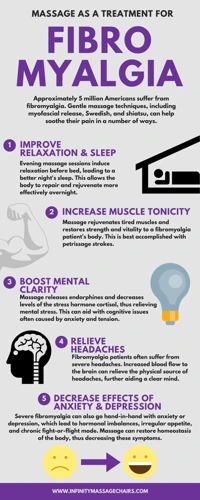
Fibromyalgia is a chronic disorder that causes widespread musculoskeletal pain and fatigue, along with other symptoms such as cognitive difficulties, sleep disturbances, depression, and headaches. It affects an estimated 10 million Americans, and the vast majority are women.
The cause of fibromyalgia is still unknown, but it is thought to be related to an over-active nervous system. People with fibromyalgia experience pain that is out of proportion to any underlying physical injury or illness.
The best massage for fibromyalgia is one that combines gentle, rhythmic strokes with a focus on areas that are particularly tender. Trigger point massage, which involves applying deep pressure to areas of the body that are especially sensitive, can also be beneficial. Other massage techniques that have been found to be helpful for fibromyalgia include Swedish massage, myofascial release, and reflexology.
What Massage Is Best for Fibromyalgia?
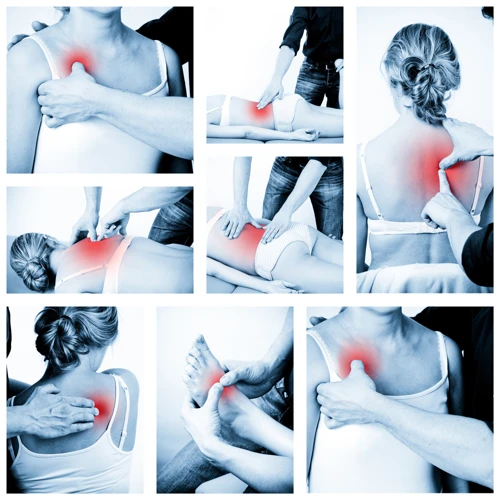
When it comes to massage for fibromyalgia, the best type of massage to use is one that focuses on both relaxation and pain relief. Some of the techniques that may be used are:
- Swedish Massage: This is a gentle and relaxing massage that uses light to moderate pressure to help reduce tension, relax the muscles and improve circulation.
- Deep Tissue Massage: This type of massage uses more pressure to reach deep into the muscles and release tight knots and adhesions.
- Trigger Point Therapy: This type of massage targets specific areas of tightness and pain and uses pressure to release the areas of tension.
- Myofascial Release: This type of massage uses sustained pressure to help release the fascia, the connective tissue that surrounds the muscles.
- Acupressure: This is a form of massage that uses finger pressure to help stimulate the body’s natural healing abilities by targeting specific acupoints.
The type of massage that is best for fibromyalgia will depend on the individual’s needs and preferences. It is important to discuss any pain or discomfort with the massage therapist before the session begins. The massage therapist can then tailor the treatment accordingly.
Preparation for a Massage
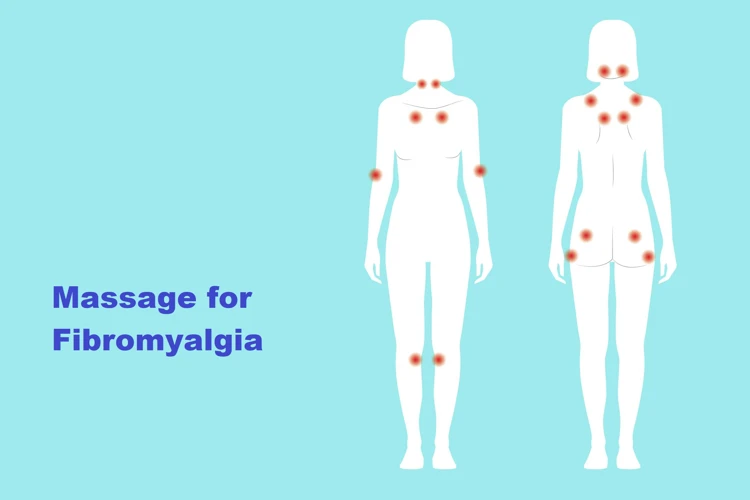
- Choose the Right Massage Therapist: It is important to find a massage therapist who is knowledgeable about fibromyalgia and has experience working with people who have chronic pain. Ask potential massage therapists about their experience and make sure they understand the needs of someone with fibromyalgia.
- Let Your Massage Therapist Know About Your Symptoms: Make sure your massage therapist knows about any areas of your body that are hurting and how intense the pain might be. Let your massage therapist know if there are any other symptoms or health issues they should be aware of.
- Talk About Your Goals for the Massage: Discuss with your massage therapist what you hope to get out of the massage. This will help them tailor the massage to your needs and ensure you get the most out of it.
- Schedule Regular Massages: How often you should get a massage with fibromyalgia can depend on your individual needs. For some people, regular massage therapy can help reduce pain and inflammation. Talk to your massage therapist about how often you should get a massage.
- Take Care of Yourself Before and After: Make sure to get plenty of rest before and after your massage. Drink lots of water and eat a healthy meal before and after to help your body process the massage. Take a warm bath or shower after to further relax your muscles.
Massage Techniques for Fibromyalgia
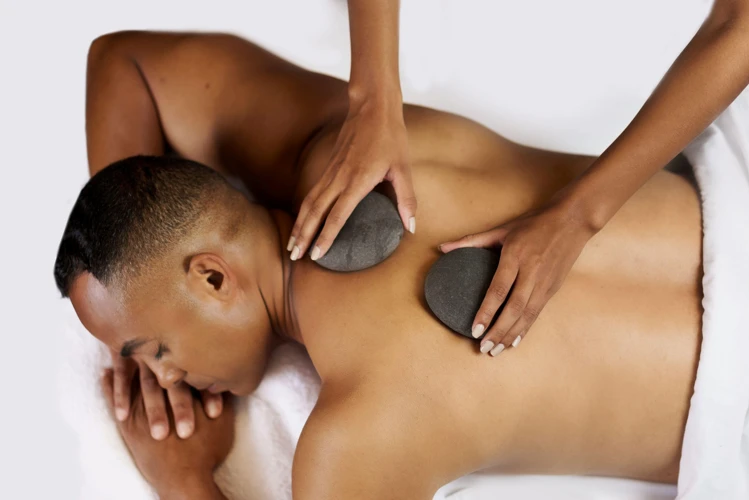
Swedish Massage: This classic massage technique uses light to medium pressure and long strokes to increase circulation and reduce overall tension in the body. It can help ease muscle pain and reduce stress.
Trigger Point Therapy: This type of massage focuses on specific areas of tension or knots in the muscles. It is especially helpful for relieving pain in the shoulders, neck, and back.
Deep Tissue Massage: This massage uses deeper pressure to release built-up tension in the muscles. It can help relax tight muscles and improve flexibility.
Myofascial Release: This technique focuses on releasing the connective tissue, called fascia, that surrounds the muscles. It can help reduce pain and improve range of motion in the affected areas.
Craniosacral Therapy: This gentle massage technique focuses on the craniosacral system, which includes the spine, skull, and sacrum. It can help reduce headaches, improve sleep, and promote a feeling of relaxation.
Reflexology: This massage technique involves applying pressure to certain areas of the hands and feet. It can help reduce stress, improve circulation, and boost energy levels.
Benefits of Massage for Fibromyalgia
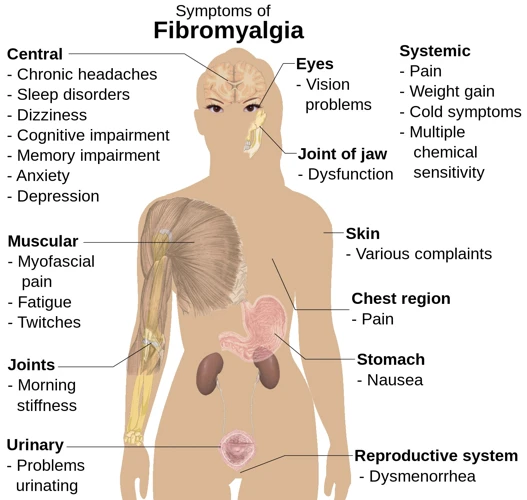
Massage therapy is a great way to ease fibromyalgia symptoms, such as chronic pain, fatigue, and insomnia. It can also help reduce stress, anxiety, and depression. Massage therapy can be used to:
- Decrease pain: Massage therapy can reduce pain levels by stimulating the release of endorphins, which are natural painkillers. It can also help to improve circulation, which can help to reduce inflammation and improve the flow of oxygen and nutrients to the muscles.
- Improve sleep: Massage therapy can help to relax the body and reduce stress and anxiety, which can lead to improved sleep quality.
- Reduce fatigue: Massage therapy can help to reduce fatigue by improving circulation and promoting relaxation.
- Reduce stress and anxiety: Massage therapy can help to reduce stress and anxiety by promoting relaxation and calming the nervous system.
- Improve mood: Massage therapy can help to improve mood by promoting the release of endorphins, which are natural feel-good chemicals.
Massage therapy is a safe and natural way to reduce fibromyalgia symptoms and improve overall health and wellbeing.
Risks of Massage for Fibromyalgia
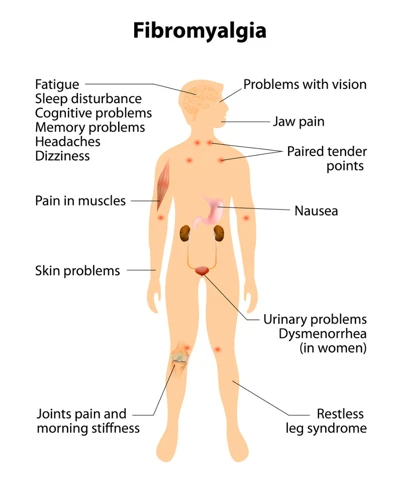
Pain and discomfort: Massage can be uncomfortable for people with fibromyalgia, and may cause increased pain or discomfort. It is important to communicate with your massage therapist and let them know if there is any increase in pain or discomfort, so they can adjust their technique or pressure.
Infection: Massage can increase the risk of infection if proper sanitation and hygiene practices are not followed. Be sure to ask your massage therapist about their sanitation and hygiene practices.
Trigger points: Massage can cause trigger points to flare up, leading to increased pain and discomfort. It is important to communicate with your massage therapist about any trigger points that may be present.
Worsening of symptoms: Massage can worsen symptoms of fibromyalgia and should be used with caution. Be sure to talk to your doctor before beginning massage therapy.
Unrealistic expectations: Massage should not be used as a cure for fibromyalgia. It may help to manage symptoms, but it is important to have realistic expectations about the potential benefits of massage therapy.
How Often Should You Get a Massage with Fibromyalgia?
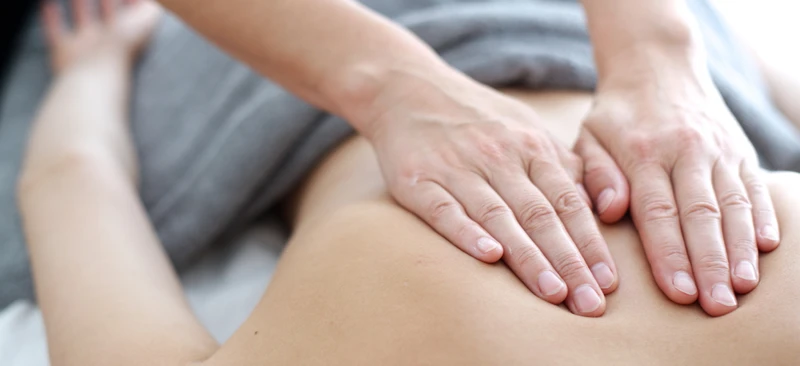
Frequency of Massage for Fibromyalgia
- The frequency of massage for fibromyalgia depends on the individual and their needs.
- Massage therapy can be used as a preventative measure to help reduce the severity and frequency of fibromyalgia flare-ups.
- People with fibromyalgia may benefit from regular massage sessions, depending on their individual circumstances.
- It is important to communicate with your massage therapist about how often you should get massages and what type of massage would be best for you.
Benefits of Regular Massage for Fibromyalgia
- Regular massage can help to reduce stress and tension in the body, which can be a trigger for fibromyalgia flare-ups.
- Massage can also help to improve circulation and reduce pain.
- Regular massage sessions can help to improve flexibility and range of motion, which can help to reduce stiffness.
- Massage can help to improve sleep quality, which can be beneficial for overall health and wellbeing.
- Massage can also help to reduce anxiety and depression, which can be common in people with fibromyalgia.
Finding the Right Massage Therapist for Fibromyalgia
- It is important to find a massage therapist who is familiar with fibromyalgia and the symptoms associated with it.
- Make sure to discuss your goals and expectations with your massage therapist to ensure they can provide the best treatment for your needs.
- It is also important to communicate any areas of discomfort or pain so that your massage therapist can adjust the massage accordingly.
Tips for Maximizing Comfort and Relief
- Choose the Right Massage Technique: Massage therapy can be beneficial for those with fibromyalgia, but it’s important to choose the right type of massage. A Swedish massage is recommended as it may provide some relief from the pain associated with fibromyalgia. Other massage techniques such as deep tissue, trigger point, Shiatsu, and acupressure can also be beneficial. Be sure to discuss your needs with the massage therapist to determine the best massage for your specific condition.
- Set a Relaxing Ambiance: Create a relaxing environment for the massage session. This can include lighting scented candles, playing soothing music, or utilizing essential oils or aromatherapy. These techniques can help create a calming atmosphere and reduce stress, which can be beneficial for those with fibromyalgia.
- Communicate with the Massage Therapist: Keep an open dialogue with the massage therapist about your comfort level and any areas of discomfort. Let the massage therapist know if the pressure is too light or too strong, or if you’d like additional focus on a certain area. Be sure to communicate any changes in your condition so that the massage therapist can adjust the massage appropriately.
- Take Breaks During the Massage: If you’re feeling any discomfort during the massage, take a break and let the massage therapist know. It’s important to listen to your body and take breaks when needed. Additionally, if the massage therapist notices any pain or discomfort, it’s best to take a break and adjust the massage technique accordingly.
- Schedule Regular Massages: Regular massage therapy can help to reduce pain and improve sleep quality for those with fibromyalgia. Consider scheduling a massage at least once a month to ensure that you receive the maximum benefit from the massage.
Frequently Asked Questions
What are the Potential Benefits of Massage for Someone with Fibromyalgia?
Massage therapy can be an effective complement to traditional fibromyalgia treatment plans, as it can help reduce pain, stiffness, and tension in the muscles. It can also help improve circulation, decrease fatigue and emotional stress, and promote relaxation. Massage therapy can also help improve sleep, reduce inflammation, improve posture, and increase range of motion. Additionally, massage can help reduce the intensity of fibromyalgia-related headaches and improve overall quality of life.
How should the massage be tailored to the individual’s needs?
Massage should be tailored to the individual’s needs and medical history. Talk with the individual about their specific areas of pain and discomfort, as well as their goals for the massage. Discuss the type of pressure, technique, and frequency of massage that would be most beneficial. Adjust the massage to accommodate any physical limitations or special requests. Make sure to ask for feedback throughout the massage to ensure maximum comfort and relief.
Are There Any Massage Techniques That Should Be Avoided?
Yes. Massaging someone with fibromyalgia should be done with caution. Certain techniques can cause discomfort and pain instead of relief and comfort. The following massage techniques should be avoided when massaging someone with fibromyalgia:
- Deep Tissue Massage – Deep tissue massage involves heavy pressure that can be painful for someone with fibromyalgia.
- Trigger Point Massage – Trigger point massage involves applying direct pressure to painful knots in the muscles. This can be too painful for someone with fibromyalgia.
- Light Stroking – Light stroking can be too light to be effective in relieving pain and tension. It can also be too stimulating, causing more pain and discomfort.
- Cross-Fiber Friction – Cross-fiber friction is a massage technique that involves rubbing the muscles in a certain direction. This can be too stimulating for someone with fibromyalgia.
It is important to remember that everyone is different and what works for one person may not work for another. Talk to your massage therapist about which techniques are best for your particular situation.
Are there any particular massage oils or products that are recommended?
Yes:
- Oils that are rich in essential fatty acids, such as coconut, almond, and jojoba oil.
- Oils that are high in vitamin E, such as wheat germ, sunflower seed, and sesame oil.
- Oils that contain anti-inflammatory and analgesic properties, such as lavender, chamomile, and peppermint oil.
- Aromatherapy products, such as candles, incense, and diffusers, that can help to reduce stress and promote relaxation.
No:
- Oils that are high in saturated fats, such as vegetable oil.
- Mineral oil, which can clog pores and cause skin irritation.
- Synthetic fragrances, which can cause allergic reactions.
What are the signs that a massage may be too intense and needs to be adjusted?
Massage should be comfortable and enjoyable for the recipient. If the massage is too intense, the person may experience increased pain, discomfort, and muscle tension. Signs that a massage may be too intense include: increased pain, tensing of muscles, shallow breathing, verbal cues of discomfort, and goosebumps. If any of these signs are present, the massage therapist should adjust the pressure, change the massage technique, or take a break.
Conclusion
Massaging someone with fibromyalgia can be beneficial for both physical and mental relief. It is important to be gentle and use slow, intentional movements, as well as to be aware of any areas that may be too tender to touch. Pressure should always be adjusted to the individual’s comfort level and applied to the affected area. Using lotion, oil, or ointment can help make the massage more comfortable and enjoyable. With these tips, you can help provide relief to someone with fibromyalgia.

